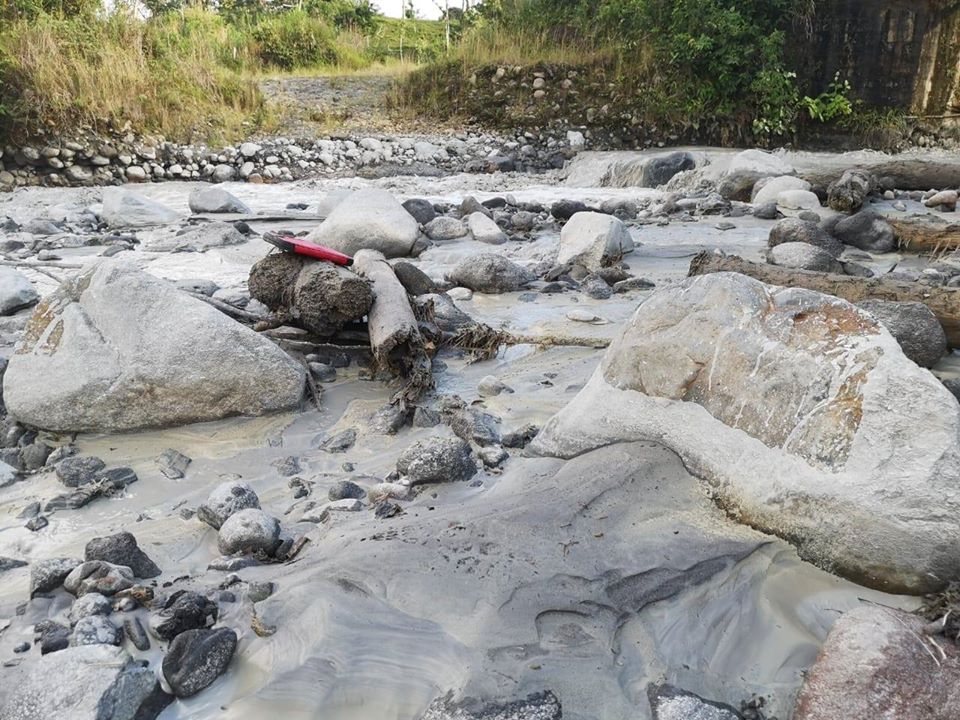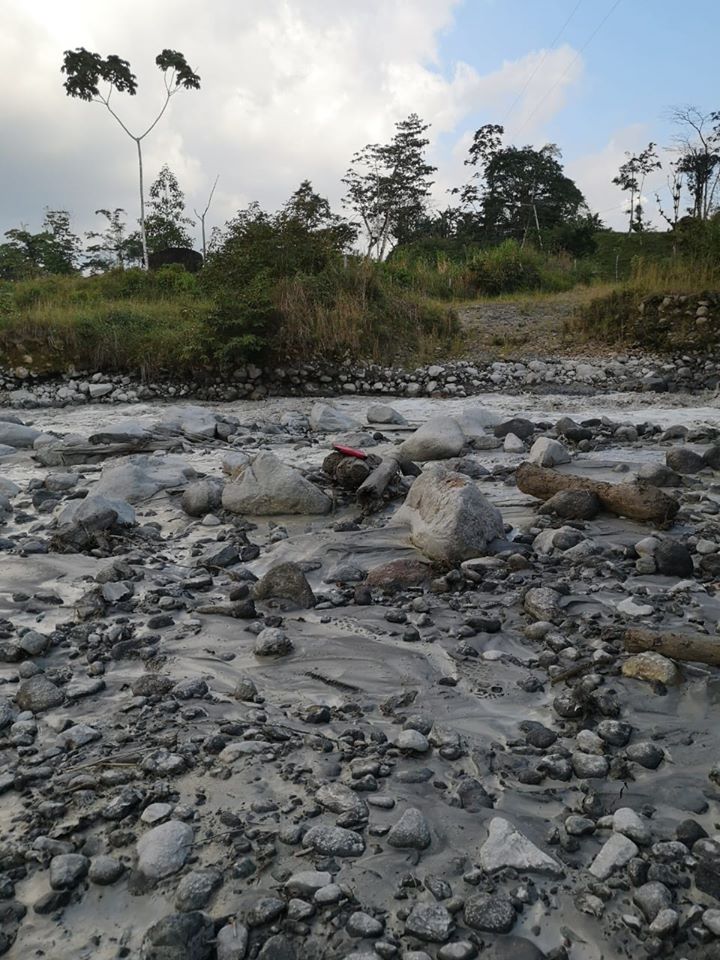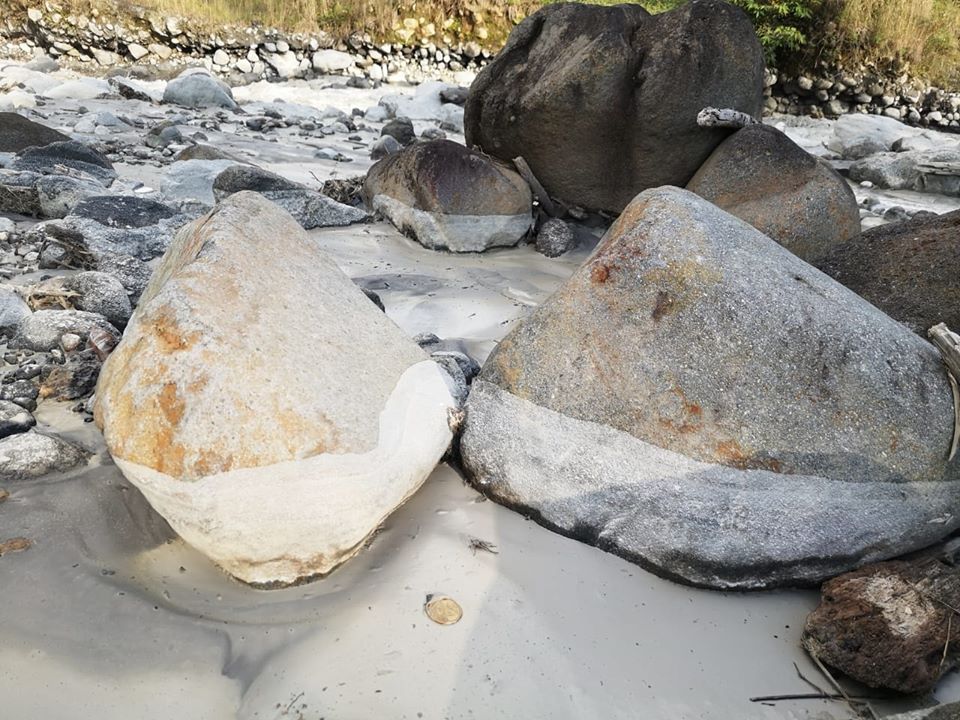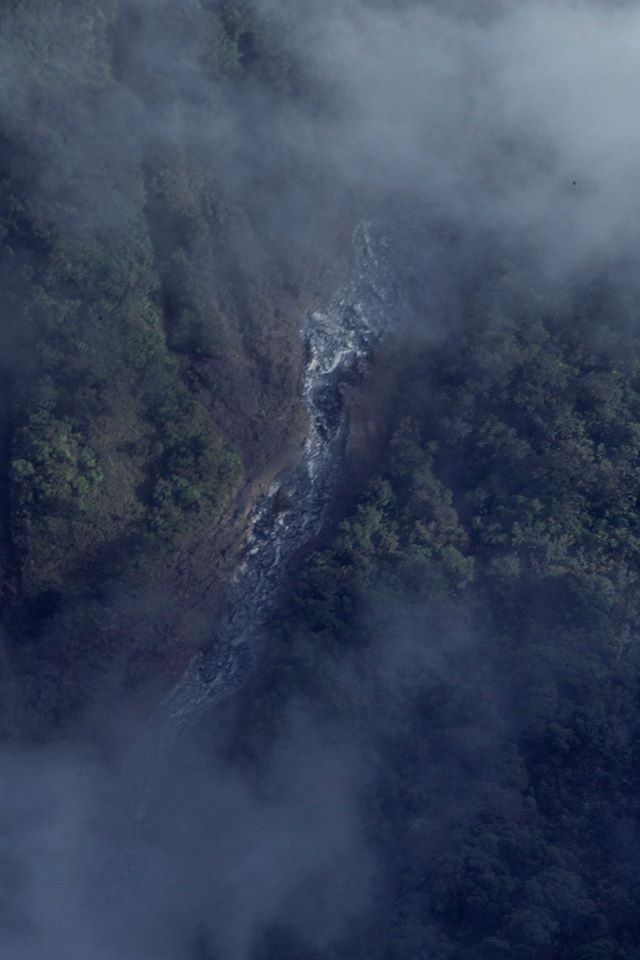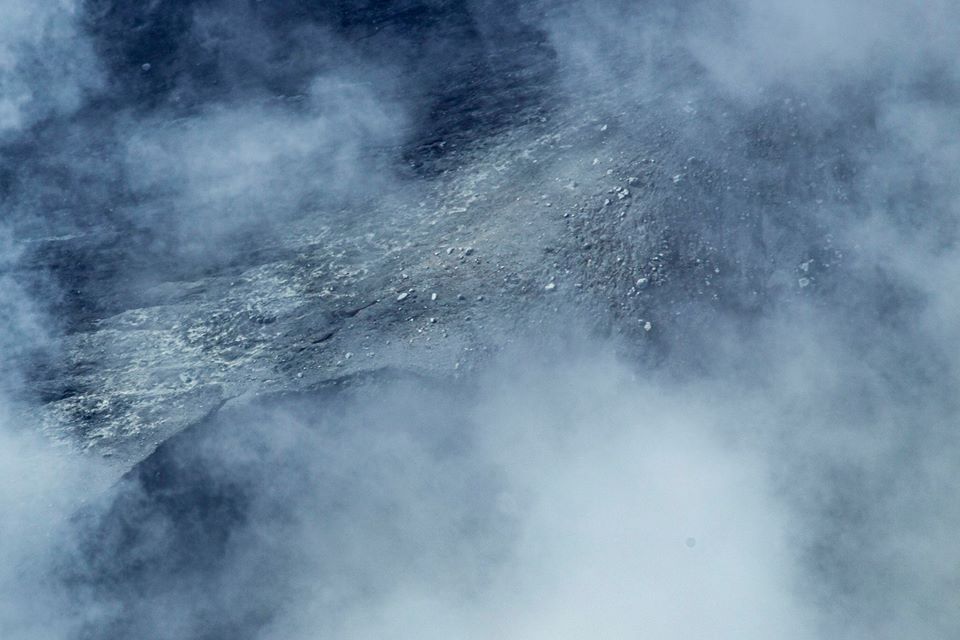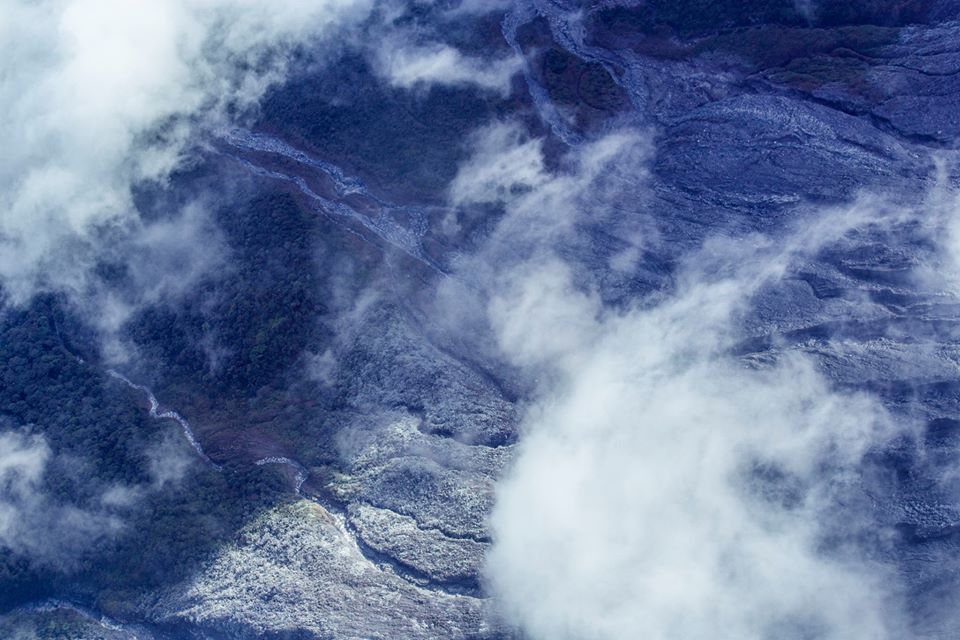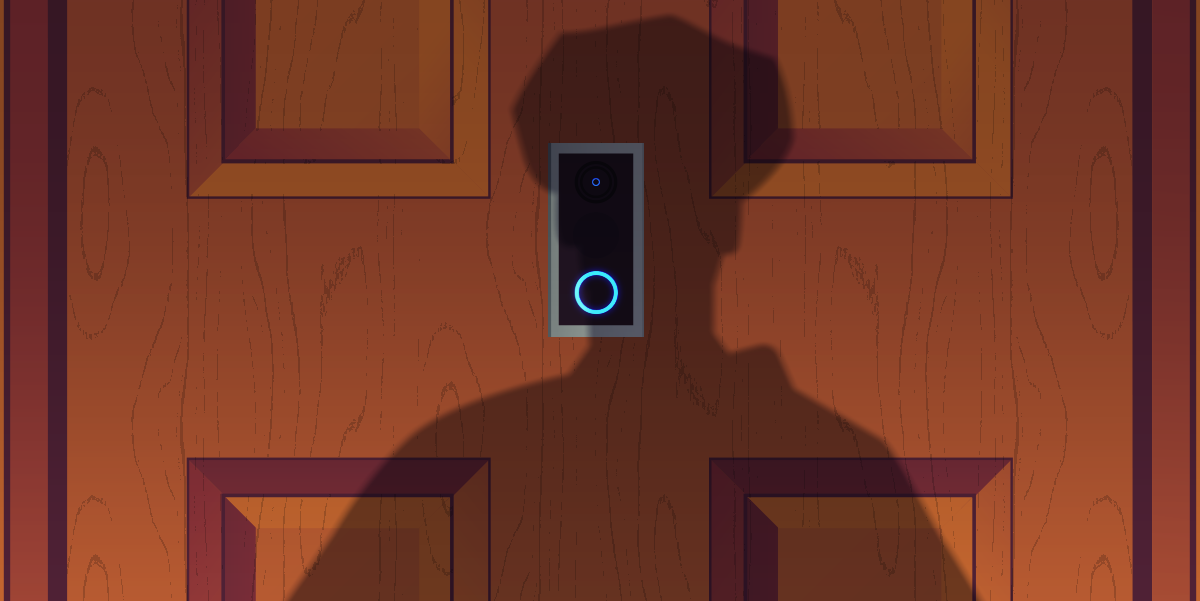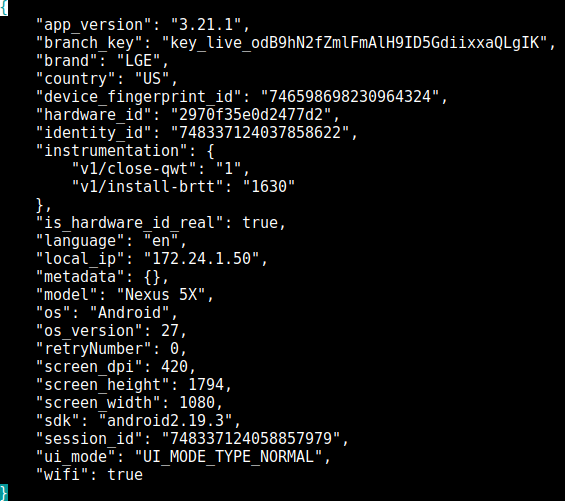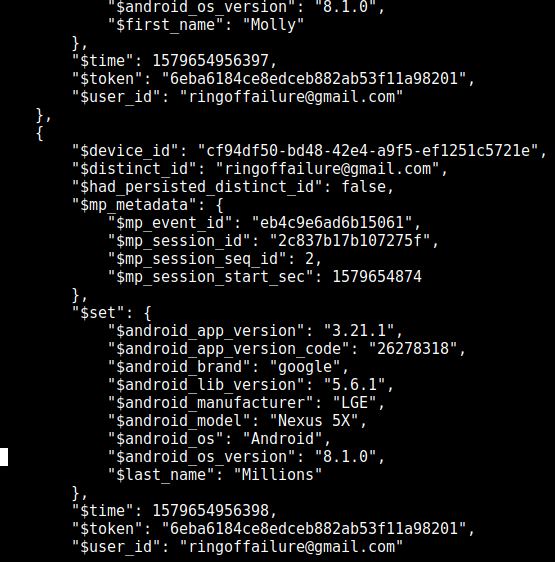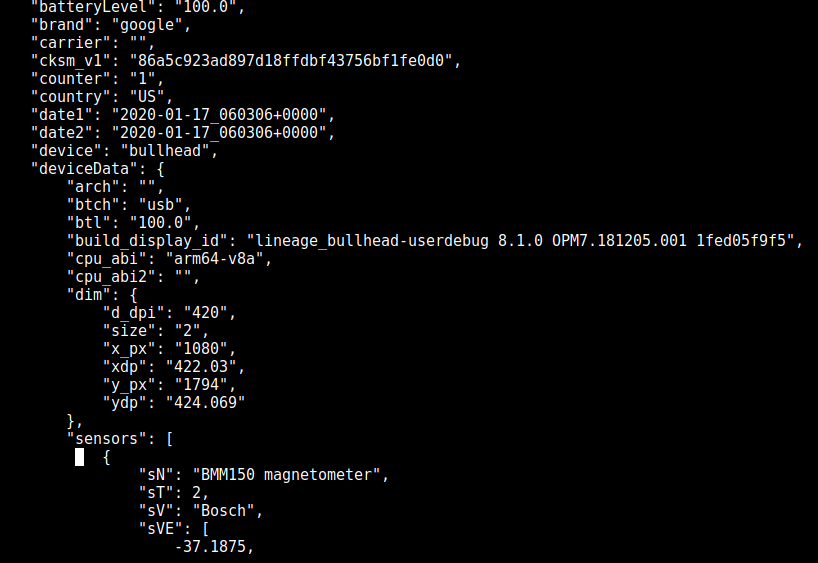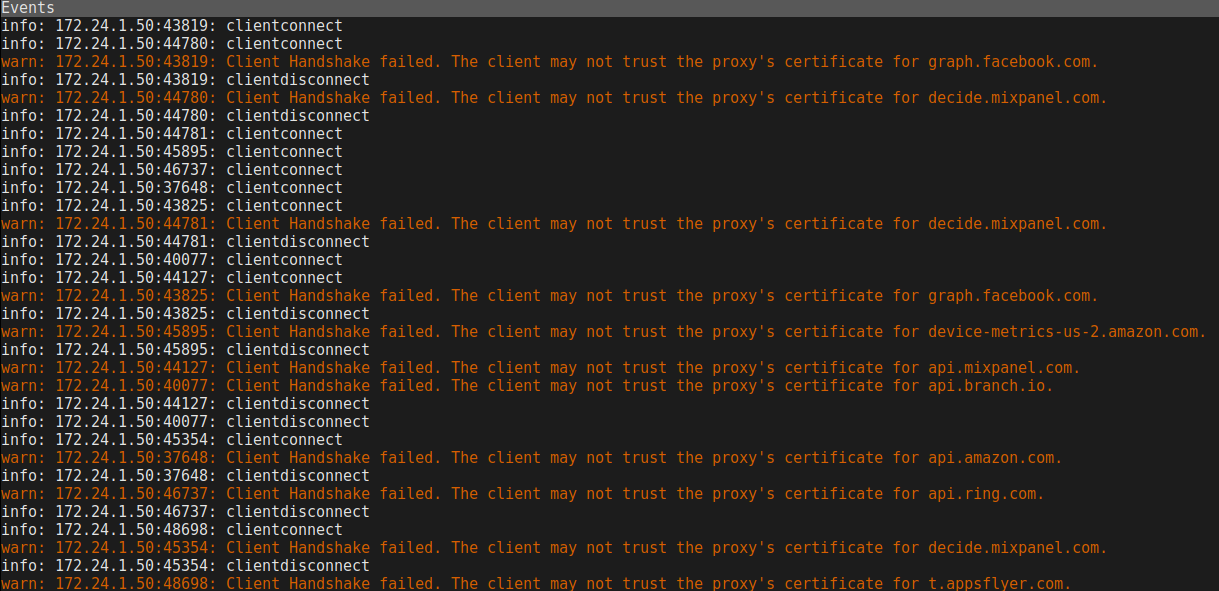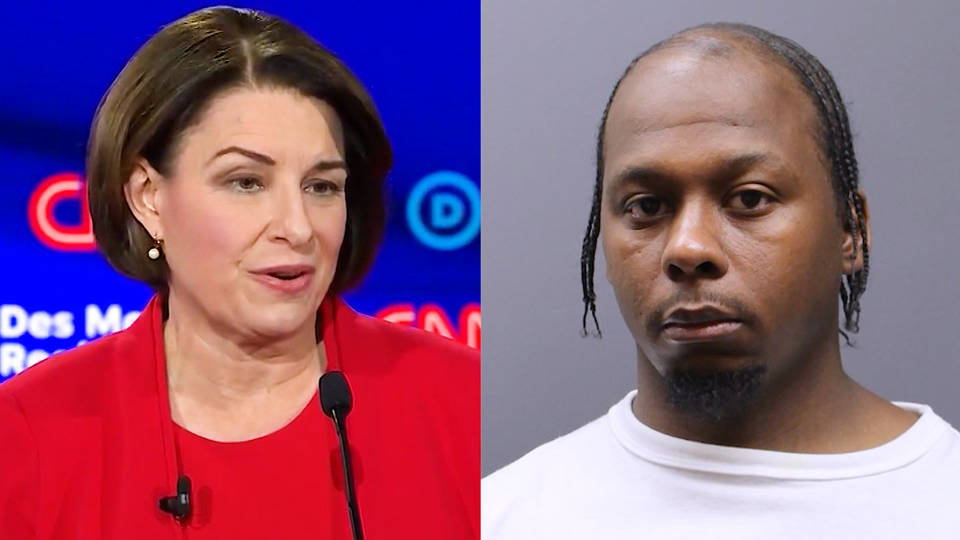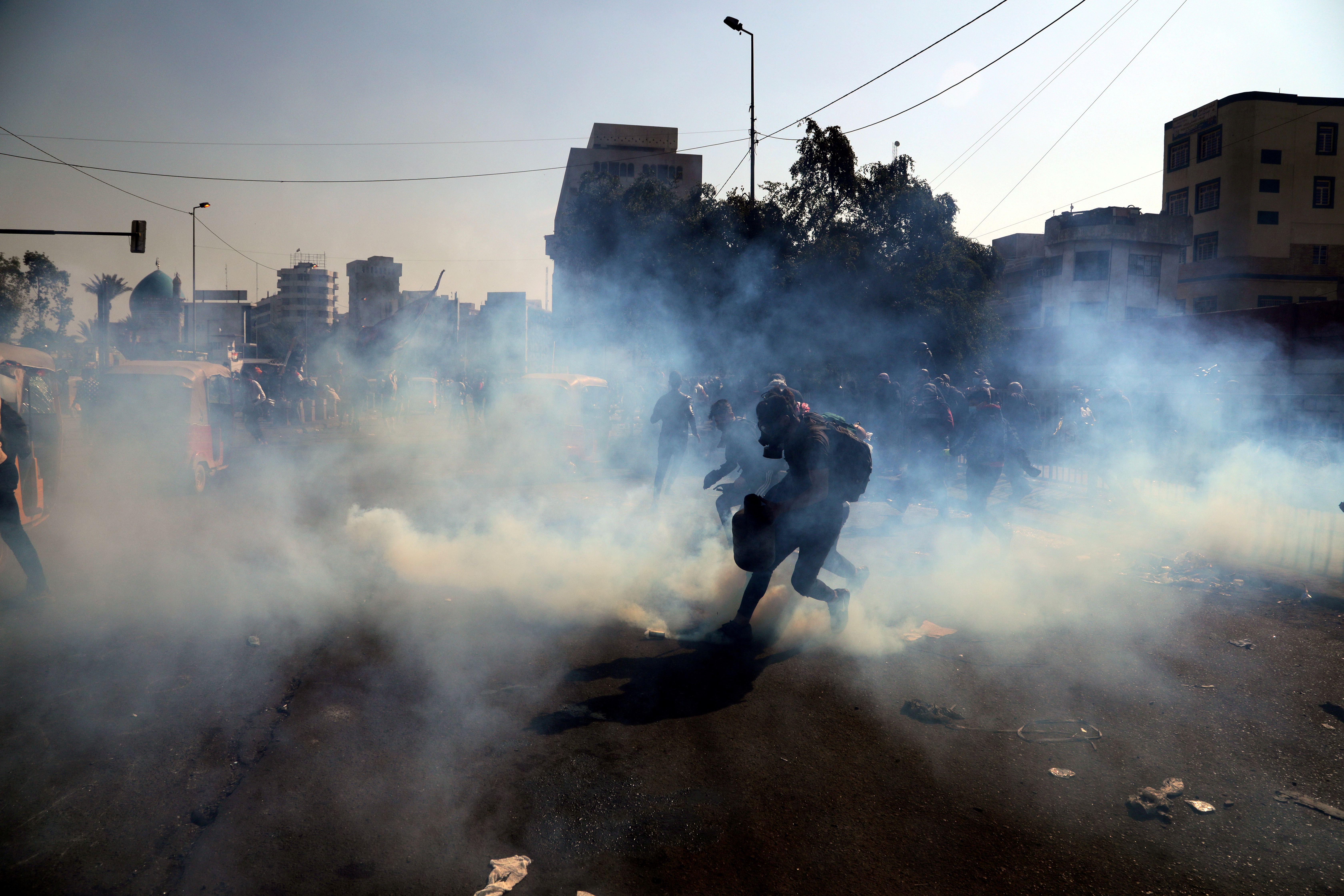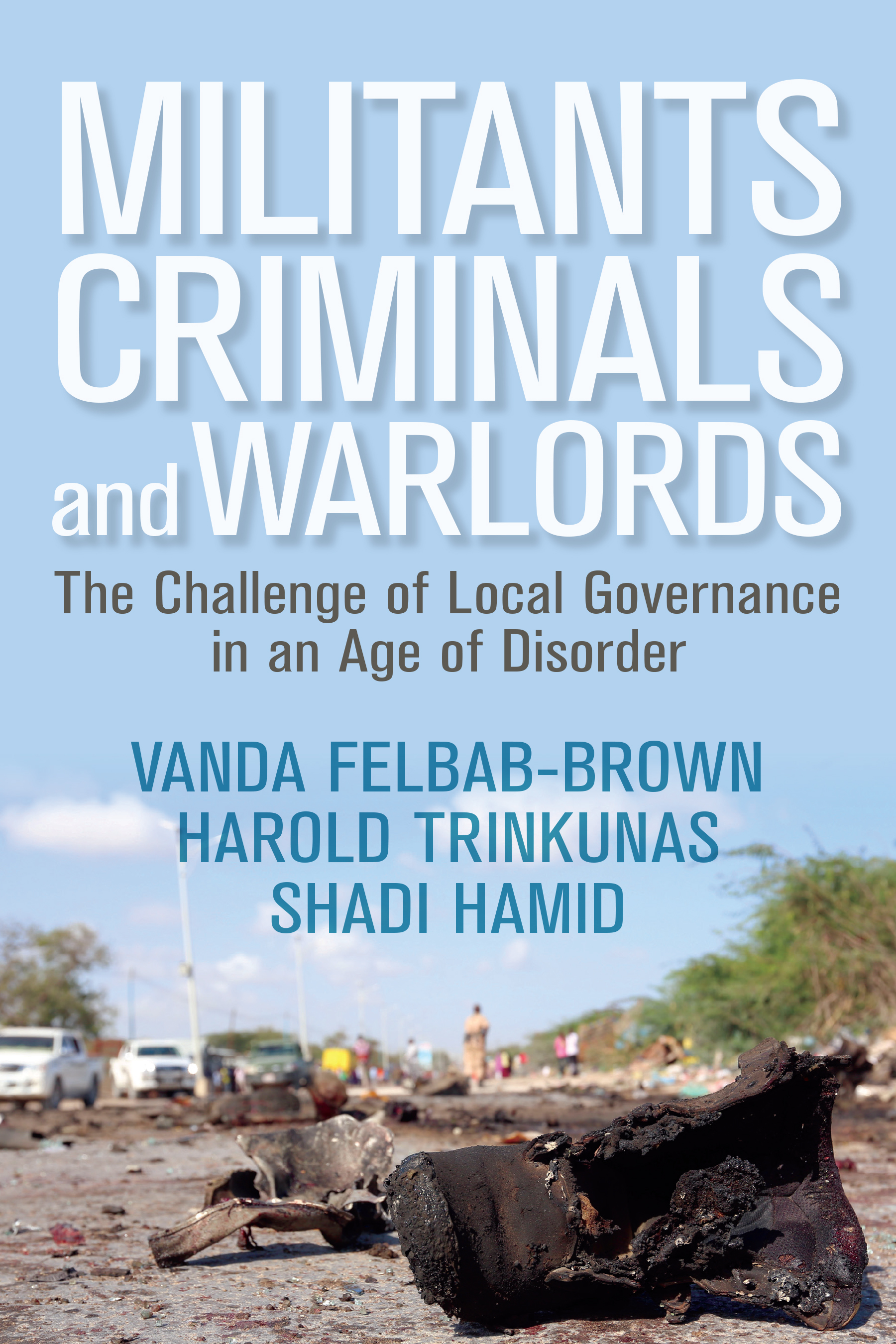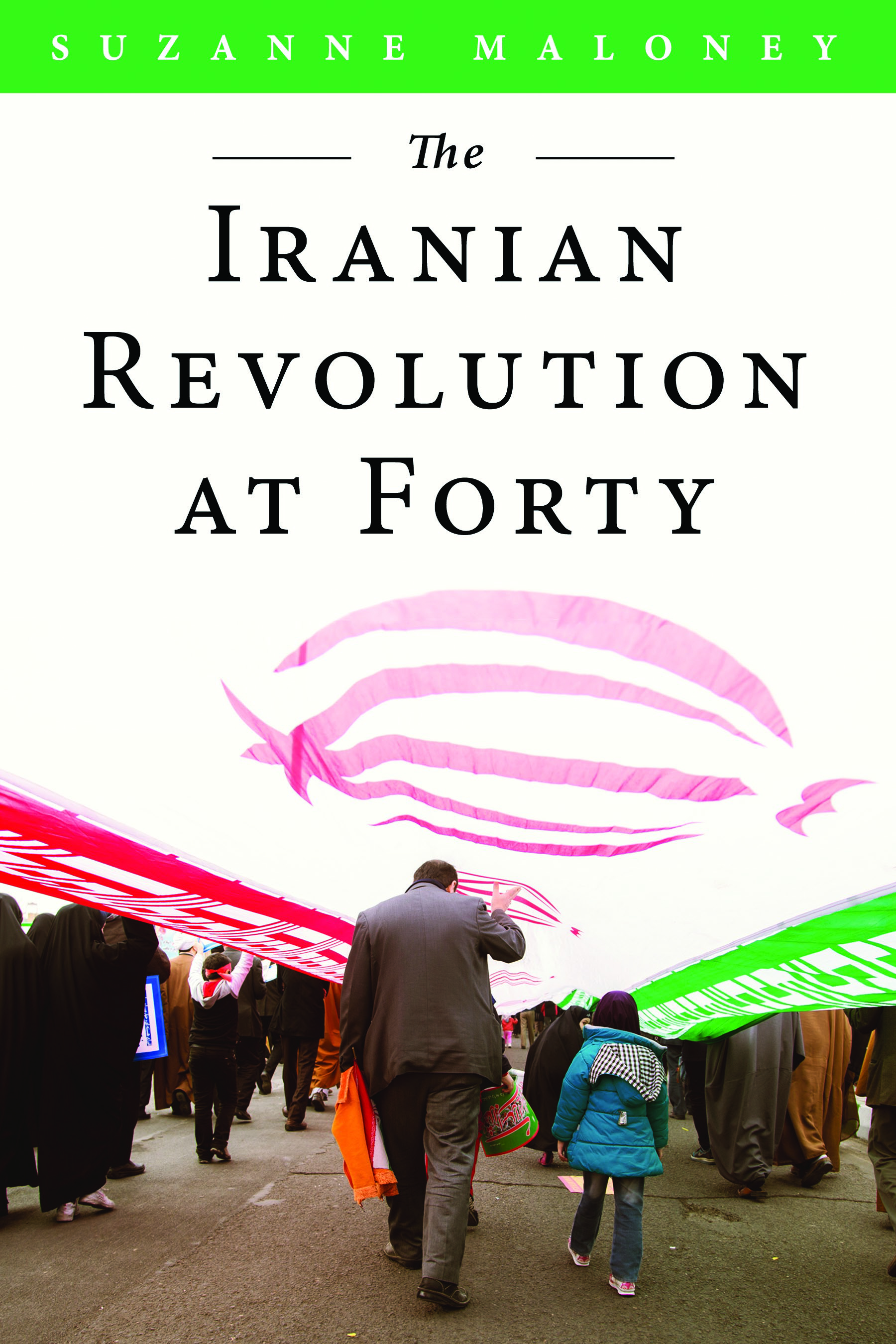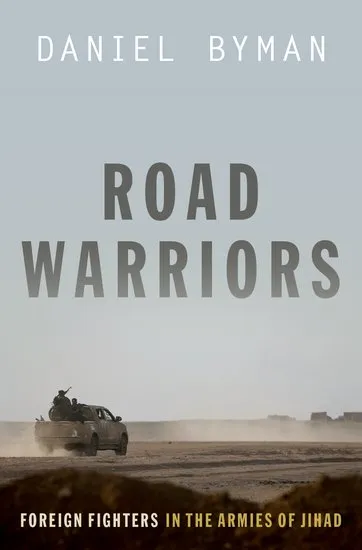“Yet Another Declaration of War on Palestinians”: Rashid Khalidi on Trump’s Middle East “Peace” Plan
STORY JANUARY 29, 2020
This is viewer supported news. Please do your part today.DONATE
GUESTS
Edward Said professor of modern Arab studies at Columbia University. He’s the author of several books, including his latest, The Hundred Years’ War on Palestine.
Israeli Prime Minister Benjamin Netanyahu has announced plans to annex about 30% of the occupied West Bank, after Israel was given the green light to do so by the United States. On Tuesday, President Trump — with Netanyahu by his side — unveiled a so-called Middle East peace plan that was drafted by Trump’s son-in-law Jared Kushner without any input from Palestinians. Under the plan, Israel will gain sovereignty over large areas of the occupied West Bank, Jerusalem would be under total Israeli control, and all Jewish settlers in the occupied territory will be allowed to remain in their homes. The plan also calls for a four-year settlement freeze and the possible creation of a truncated Palestinian state, but only if a number of conditions are met. Palestinians responded to the U.S. plan with protests in the West Bank and Gaza. Palestinian President Mahmoud Abbas rejected the deal. Only hours before the plan was announced, Netanyahu was indicted for corruption, marking the first time in Israel’s history that a sitting prime minister will face criminal charges. We speak with Mehdi Hasan, senior columnist at The Intercept, and Rashid Khalidi, the Edward Said professor of modern Arab studies at Columbia University. Khalidi’s latest book is titled “The Hundred Years’ War on Palestine.”
Transcript
This is a rush transcript. Copy may not be in its final form.
AMY GOODMAN: Israeli Prime Minister Benjamin Netanyahu has announced plans to move ahead with annexing about 30% of the occupied West Bank, after Israel was given the green light to do so by the United States. On Tuesday, President Trump stood by Netanyahu to unveil the Middle East “peace” plan that was drafted by Trump’s son-in-law Jared Kushner without any input from Palestinian leaders. The plan was introduced just hours after Netanyahu was indicted for corruption and in the middle of Trump’s impeachment trial in the Senate.
Under the plan, Israel will gain sovereignty over large areas of the occupied West Bank, Jerusalem would be under total Israeli control, and all Jewish settlers in the occupied territory would be allowed to remain in their homes. The plan also calls for a four-year settlement freeze and the possible creation of a truncated Palestinian state, but only if a number of conditions are met.
This is President Trump.
PRESIDENT DONALD TRUMP: My vision presents a win-win opportunity for both sides, a realistic two-state solution that resolves the risk of Palestinian statehood to Israel’s security. Today, Israel has taken a giant step toward peace. Yesterday, Prime Minister Netanyahu informed me that he is willing to endorse the vision as the basis for direct negotiations — and, I will say, the general also endorsed, and very strongly — with the Palestinians. A historic breakthrough.
AMY GOODMAN: Israeli Prime Minister Benjamin Netanyahu praised the U.S. deal.
PRIME MINISTER BENJAMIN NETANYAHU: For too long, far too long, the very heart of the land of Israel, where our patriarchs prayed, our prophets preached and our kings ruled, has been outrageously branded as illegally occupied territory. Well, today, Mr. President, you are puncturing this big lie. You are recognizing Israel’s sovereignty over all the Jewish communities in Judea and Samaria, large and small alike.
AMY GOODMAN: Palestinians responded to the U.S. plan with protests in the West Bank and Gaza. Palestinian President Mahmoud Abbas rejected the deal.
PRESIDENT MAHMOUD ABBAS: [translated] I say to the partners Trump and Netanyahu: Jerusalem is not for sale. All our rights are not for sale and are not for bargain. And your deal, the conspiracy, will not pass.
AMY GOODMAN: For more, we’re joined in New York by Rashid Khalidi, the Edward Said professor of modern Arab studies at Columbia University, the author of several books. His latest is just out. It’s called The Hundred Years’ War on Palestine.
Welcome to Democracy Now!, Professor Khalidi. Can you start off by responding to this plan? The scene yesterday at the White House: President Trump, in the midst of the Senate impeachment trial nearby in the Capitol, standing next to the prime minister, Benjamin Netanyahu, who had just been indicted yesterday for corruption.
RASHID KHALIDI: Right. Well, what these two miscreants have done, one of them impeached and the other indicted, is to roll out an Israeli peace plan, a peace plan that was dictated to young Jared Kushner by his Israeli mentors, and who have fulfilled the wish list of the extreme Israeli right ever since they conquered the West Bank in 1967 — and I would even say going back even further. This is meant to end the Palestine question. This is meant to expand “Greater Israel” from the river to the sea. There’s no state in this for the Palestinians. Sovereignty will reside solely in Israel. Control will reside solely in Israel. And in fact what it means is not just annexation and so on and so forth; it means that the United States and Israel are going to dictate the terms, or try to dictate the terms, of a settlement.
We will never see this thing come to pass. It is so unrealistic. It is so at odds with not only international law, but everything everybody has put forth, except the extreme Israeli right and their friends in Washington, since the beginning of this conflict. It is, in my view, yet another declaration of war on the Palestinians, in this 100 years’ war that’s been going on since the beginning of the 20th century.
AMY GOODMAN: So, Palestinian President Mahmoud Abbas called Trump’s plan a “conspiracy.” And the prime minister, Mohammad Shtayyeh, said, in advance of its release, it’s “nothing but a plan to liquidate the Palestinian issue.” If you can say more how this plan came into being? I want to turn, though, first, to the voices of some Palestinians who took to the streets on Tuesday to protest the U.S. deal.
FARID ALBERIM: [translated] Regarding the plan of the century, we say to Trump and the American administration that our people are united behind our Palestinian leadership, represented by President Abbas. We reject this plan, the plan of shame that has nothing to offer Palestinians.
MOHAMMED ALBAKRI: [translated] I think that this speech came to support Benjamin Netanyahu, to help him to pass his internal crisis. It is also part of the election campaign for Donald Trump in the coming election. It is nothing more than an election campaign for both.
JIHAD ALQAWASMEH: [translated] This plan is a gift from a big thief to a small thief.
AMY GOODMAN: Professor Khalidi, those are voices of Palestinians, from Gaza to Hebron. So, what exactly does it mean when the U.S. stands with Israel at the White House and puts this forward, developed by the young developer Jared Kushner?
RASHID KHALIDI: Yeah. Well, I don’t think Jared Kushner has an idea in his head about anything to do with Palestine or Israel. He knows what he’s told. And this is dictated to him by his Israeli mentors, and it is meant to be an Israeli diktat to the Palestinians, telling them, “You will not have Jerusalem. You will not have sovereignty. You will not have any of your national rights. And you will get what we choose to give you, when we choose to give it to you.”
And the United States has now endorsed that position. In so doing, the United States actually separates itself from every country in the world, except a few client states in the Arab Gulf. It puts itself in a position completely at odds not only with past American positions, but every aspect of international law. We heard Netanyahu call — the description of the Occupied Territories as “illegally occupied,” we heard him call that a lie. The liar here is Netanyahu. International law is not determined by an indicted — an impeached president and an indicted Israeli prime minister. It’s determined by others. And others have long since determined that those territories are illegally occupied, that what Israel does in Jerusalem — everything it does in Jerusalem — is illegal.
And so, this is a — I wouldn’t call it a conspiracy. This is something cooked up by two political leaders trying to escape the plight that they’re both in, in order to increase their chances at the next election. There’s one in Israel in a little more than a month and a bit, and there’s one in our country in November. And both of them think that this will help them in that regard.
It won’t see the light of day. But the things that it includes, such as annexation and so forth, will go ahead — and they were going to go ahead in any case. So, I don’t think this is a momentous plan, in any way, shape or form. It simply represents, as I said, the wish list of the extreme Israeli right, which has now been endorsed by the American president. It has actually no valence beyond that.
AMY GOODMAN: This is President Trump’s son-in-law Jared Kushner speaking on CNN.
JARED KUSHNER: I come from a real estate background. It was very, very difficult to draw these lines and to get a map where you could have contiguity to a Palestinian state. And again, this isn’t because of something that we — that we developed. This is something that we inherited, the situation where Israel continues to grow and grow. And what the president secured today was Israel agreeing to stop, for four years, more settlements, to give the Palestinians their last chance to finally have a state.
AMY GOODMAN: Professor Khalidi, your response? And then, put it in the context of history.
RASHID KHALIDI: Right. I mean, one actually has to look at this ludicrous plan, the 181 pages, and look at the map and see that either Jared Kushner is blind or he’s a liar. There is no contiguity for the Palestinian — so-called Palestinian state. There are five or six chunks, separated by swaths of Israeli territory, which is part of a plan that goes back to almost the beginning of the occupation: to chop up the West Bank so there can be no Palestinian state, so there can be no contiguity. If he can’t see that, or is lying to the people on CNN, that’s his problem. We should not be taken in. I suggest everybody have a quick look at that plan, because what is clear is that this is something that — I mean, you can talk about it in terms of Bantustans, you can talk about it in terms of any other kind of humiliating imposition on the rights of the indigenous population by a settler colonial regime, which is what we are seeing here. And Mr. Kushner is aiding and abetting this in his ignorance and in his passion for the extreme Israeli right’s positions.
AMY GOODMAN: So, your book, which talks about the hundred years’ war on Palestine, this is yet just another moment in history.
RASHID KHALIDI: Right.
AMY GOODMAN: Put this into context of that century.
RASHID KHALIDI: Well, and one of the things that I point out is that this is not a war waged just by Israel or by the Zionist movement on the Palestinians. This is a war that was aided, abetted, endorsed and made possible at every stage by the greatest power of the age, whether that was Great Britain at one stage or the United States and the Soviet Union in 1947 or, today, President Trump. Israel could not do this without external support. The Zionist movement could not have established itself as it did without Great Britain.
And so, as you suggest, this is yet another stage in a very long process whereby not just Israel and the Zionist movement, but a whole range of collaborators or people in collusion with Israel have enabled Israel to do what it has managed to do. And it is a war on Palestine. This is not a struggle between two equals. This is not simply a struggle between two national movements. There are two peoples involved, but one of them has enormous support from the outside, and the other, the Palestinians, are an indigenous people faced with this Moloch-like colonial settler movement, which is grinding up their country, taking as much of it as it can, and only able to do this because of support from great powers like the United States under President Trump.
AMY GOODMAN: I want to break, and we’re going to continue with professor Rashid Khalidi, the Edward Said professor of modern Arab studies at Columbia University. His new book is just out, The Hundred Years’ War on Palestine. And Mehdi Hasan will also join us, of Al Jazeera and The Intercept. We’ll continue to talk about the — what President Trump calls the Middle East “peace” plan, but Palestinians call everything from a conspiracy to simply reject this plan about what will happen in the Middle East. Then we’ll talk about the impeachment trial, with Mehdi Hasan, that’s going on now in the Senate. And finally, what’s happening in South Dakota targeting trans youth? Stay with us.
Mehdi Hasan: Trump’s Middle East Plan Is a Policy of Apartheid & Settler Colonialism
STORYJANUARY 29, 2020
GUESTS
senior columnist at The Intercept and host of their Deconstructed podcast. He’s also host of UpFront on Al Jazeera English.
Edward Said professor of modern Arab studies at Columbia University. He’s the author of several books, including his latest, The Hundred Years’ War on Palestine.
LINKS
We continue our discussion of President Trump’s long-awaited Middle East plan to end the Israeli-Palestinian conflict, which he has described as the “deal of the century.” The plan was drafted by Trump’s son-in-law Jared Kushner without any input from Palestinians and would give Israel sovereignty over large areas of the occupied West Bank, control over all of Jerusalem, and keep all illegal settlements built in the occupied West Bank. We speak with Mehdi Hasan, senior columnist at The Intercept, and Rashid Khalidi, the Edward Said professor of modern Arab studies at Columbia University. Khalidi’s latest book is titled “The Hundred Years’ War on Palestine.”
Transcript
This is a rush transcript. Copy may not be in its final form.
AMY GOODMAN: This is Democracy Now!, democracynow.org, The War and Peace Report. I’m Amy Goodman. Democratic presidential candidates Bernie Sanders and Elizabeth Warren responded to President Trump’s so-called Middle East peace plan.
Sanders issued a statement saying, quote, “Any acceptable peace deal must be consistent with international law and multiple UN Security Council resolutions. It must end the Israeli occupation that began in 1967 and enable Palestinian self-determination in an independent, democratic, economically viable state of their own alongside a secure and democratic state of Israel. Trump’s so-called 'peace deal' doesn’t come close, and will only perpetuate the conflict, and undermine the security interests of Americans, Israelis, and Palestinians. It is unacceptable,” Sanders tweeted.
Elizabeth Warren tweeted, “Trump’s 'peace plan' is a rubber stamp for annexation and offers no chance for a real Palestinian state. Releasing a plan without negotiating with Palestinians isn’t diplomacy, it’s a sham. I will oppose unilateral annexation in any form—and reverse any policy that supports it,” Senator Warren said.
Well, we go now to Washington, D.C., where we’re joined by Mehdi Hasan, senior columnist at The Intercept and host of the Deconstructed podcast. He’s also host of UpFront at Al Jazeera English. And still with us in New York, professor Rashid Khalidi, the Edward Said professor of modern Arab studies at Columbia University. His new book, The Hundred Years’ War on Palestine.
Mehdi Hasan, if you can respond to the presidential candidates responding to the Middle East plan, and then how the media has covered it?
MEHDI HASAN: I’m glad that some of the presidential candidates, Amy, have come out strongly. Elizabeth Warren came out very quick, Bernie Sanders referring to it as “annexation.” Obviously, I would like them to go further, but I know the limits of U.S. political discourse when it comes to Israel-Palestine. It’s good at least that in this election cycle you have two candidates, Warren and Sanders, talking very explicitly about Netanyahu’s racism, about annexation, about this “peace plan,” quote-unquote “peace plan,” being a sham. In fact, I think anyone who describes this as a, quote-unquote, “peace plan” — and, there you go, I just fell into the trap, because we keep hearing this phrase all the time — it’s malpractice. This is not a peace plan. When you hear any political candidate for office, any journalist referring to it as a “peace plan,” you really need to stop and think twice about that, because this is a plan for apartheid, this is a plan for settler colonialism, as Professor Khalidi mentioned earlier, before the break. And I think we need to be clear about our terms.
And, of course, you know, The New York Times put out a tweet yesterday when the plan came out, a breaking news tweet, where they talked about the Palestinians being asked to make more concessions. Just that language that we have here in the U.S. about Israel-Palestine, the idea that an occupied people, who have had their land stolen from them, are expected to concede that land to the people who have occupied them and stolen their land, it’s madness. It’s not language we would use in any other walk of life or in any other conflict. We don’t use it in the context of Crimea, Ukraine and Russia. But we do use it, and we have used it for years, in the Middle East in relation to the Occupied Territories.
What’s so interesting about the current moment, of course, is that Donald Trump — there’s always a silver lining to Donald Trump’s awfulness. And that is that he takes any issue, and he’s so extreme on it — he’s so extreme even by American presidential standards — that he forces people off whatever fence they were sitting on. And I think what he’s done in the last 24 hours, with the help of his son-in-law, with the help of Netanyahu and MBS of Saudi Arabia, who has also endorsed this plan, is the he’s forced people to basically take off the blinkers and recognize this for what it is. The conflict now is no longer Israel versus Palestine, as it’s often set up — as Professor Khalidi pointed out, it’s not; it’s a one-sided war — but it’s apartheid. And Americans now have to decide: Do they support apartheid, or do they not support apartheid? There’s no more nonsense about two-state solutions and all of that rubbish. That’s gone. That’s finished, finally over. No one pretends it’s still there on the table. It’s: Do you support apartheid, or do you not support apartheid? That is what we should be asking Democratic presidential candidates, and that is what journalists should be discussing in the media, in their op-eds, in their cable news discussion panels.
AMY GOODMAN: And, Mehdi, talk about American opinion polls. They’re very interesting on the issue of Israel-Palestine.
MEHDI HASAN: Yes. So, we are often told by supporters of the Israeli occupation in Washington, D.C., especially Republicans, that the reason the United States backs Israel so blindly, gives it billions of dollars, turns a blind eye when it massacres children in Gaza, is because American public opinion is behind Israel, because Americans want to support the, quote, “only democracy in the Middle East,” as it’s often sold, which is not actually true. Going back many, many years, if you look at the polling on this subject, most Americans, the majority or plurality of Americans, say they don’t want the United States to take the side of Israel or the Palestinians. They want the United States to be what it claims to be, but of course is not, and that is an honest broker, an impartial outside force, which it’s never been, of course.
And what’s so interesting is, about — I think it was about a year ago, at the University of Maryland, Shibley Telhami, who’s a great academic and pollster, carried out some polling of Americans on the Middle East, which found that there was almost an even split between Americans on whether they support a two-state solution, as is framed by the establishment, 36%, I think, of Americans, versus a one-state solution, a democratic, binational, secular state in which Palestinians and Jews all have, you know, one vote — one person, one vote — equal rights, and that was around 35%. It was almost even. It was a third of Americans were two-state, a third of Americans were one-state. And here’s what’s so interesting, Amy. When you tell Americans that there is no two-state solution, that option is gone, the vast majority, two out of three Americans, say, “We support a one-state solution with equal rights for everyone,” because Americans — shock, horror — like the idea of one person, one vote. That’s what this country is supposed to be built on. And they don’t like the idea of saying, “You know what? We’re going to take a people and put them under occupation and disenfranchise them in perpetuity.”
And that’s what this Kushner plan does. It basically says, “You’re never getting anything else. This is what you get.” Israel gets to annex what it likes, takes over whatever part of the West Bank it likes. And the Palestinians know they don’t get any rights. What’s so astonishing about this plan — and, you know, Americans, I would argue, the average American, would not support this idea — that a Palestinian refugee not only loses their status as a refugee under this plan forever, but Israel gets to veto Palestinian refugees from returning even to a Palestinian state, not just to Israel. Forget the right of return to Israel. Under this plan, if you look at the small print, they can’t even return to a Palestinian state without an Israeli veto.
So, I think this is all a reminder once again that — you know, Edward Said said it best back in 1978. He said, here in the United States and in the West, amongst establishment types, the Palestinian person politically does not exist. They have been completely obliterated. And I think we saw that in the last 24 hours, where you have a White House press conference, at which no Palestinian spoke, a White House meeting with the Israeli leadership but not with any members of the Palestinian leadership, and a plan put forward by the White House which had no Palestinian input whatsoever. It’s the complete and utter erasure of the Palestinians by the U.S. political establishment, by the U.S. administration.
AMY GOODMAN: Well, Mehdi Hasan, before we move on to the issue of the Senate impeachment trial of President Trump that’s taking place at the same time — it seems to have motivated a great deal in President Trump, from January 3rd, the assassination of Qassem Soleimani, to his setting precedent last Friday speaking at a “right to life” march in Washington, D.C., the first sitting president ever to do this, and then suddenly announcing he’s releasing a Middle East “peace” plan — I wanted to turn back to Rashid Khalidi. You had talked about some Gulf states perhaps supporting the president. If you can talk about the significance of Saudi Arabia, perhaps one of the most closest allies with the United States, along with Israel?
RASHID KHALIDI: Well, I think this brings up something that people don’t think about very often. The only reason that Israel is able to maintain its regional superiority is because most Arab states are not democratic. The only countries that could or would buy into this are countries which can suppress their domestic public opinion. So, the absolute monarchies of the Gulf, including the United Arab Emirates, Oman and Bahrain, whose ambassadors were at this shameful ceremony yesterday in Washington, are countries, like a few others in the Arab world, Egypt and so forth, ruled in different ways, but in ways that completely exclude representation, democracy, parliaments, public opinion, a free press, and so on and so forth. In those Arab countries where those things do exist, countries like Lebanon or Kuwait or Tunisia, you have popular outrage at what is being done in Washington. The absence of democracy in the Arab world is a precondition for this kind of thing happening. Only regimes which completely — which are capable of completely suppressing their public opinion would support such an outrageous derogation of international law, Arab rights, Arab dignity, as, unfortunately, a few of these governments have and, I’m afraid, will.
But it’s vital to represent, and it’s vital to understand, these are not the Arabs. These are a group of kleptocrats who control their countries absolutely, against the will of their people, and who are able to get away with this partly because they’re protected by the United States. So, you have had a few Arab governments that have either squeaked their approval or failed to indicate their disapproval or shamefully sent their ambassadors to this sham ceremony. But it is vital to understand what they are and who they are and what they represent. They don’t represent anybody except the elites which dominate those countries.
AMY GOODMAN: Rashid Khalidi, we want to thank you for being with us, Edward Said professor of modern Arab studies at Columbia University. His latest book, just out, The Hundred Years’ War on Palestine.
The original content of this program is licensed under a Creative Commons Attribution-Noncommercial-No Derivative Works 3.0 United States License. Please attribute legal copies of this work to democracynow.org. Some of the work(s) that this program incorporates, however, may be separately licensed. For further information or additional permissions, contact us.
